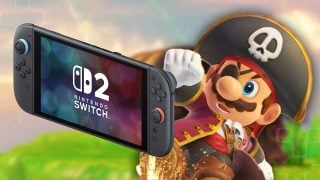Nintendo’s Game Boy, the grandpappy of today’s handheld systems, celebrates its 25th birthday today! Okay, so technically the Game Boy turned 25 in North America and Japan last year. But today is the official quarter-century mark in Europe, and around here we’ll take any excuse to party.
Nintendo holds such an important position in the history of the video game industry that many of its most famous creations are even older than many of their fans. And while it’s true that the Game & Watch series may be THE progenitor of handheld gaming, the Game Boy was arguably where portable systems really came into their own. The same adventures that were once confined to the living room TV could now be enjoyed by gamers wherever they went.
The Game Boy was bred for success from the start as the brainchild of lauded designer Gunpei Yokoi, and it perfectly incorporated Nintendo’s guiding philosophies of trading technical performance for affordability but more than making up for the difference with an array of innovative gaming experiences. The Game Boy not only brought us the worldwide phenomenon of Tetris, but also became the first home of iconic characters like Princess Daisy, Wario, and even a little pink puffball by the name of Kirby.
It’s a testament to the strength of Nintendo’s philosophies and design that the Game Boy brand not only survived, but thrived for more than 15 years. In fact, it would be almost a decade before the original model, with its pea soup-green graphics and all, would receive a true successor in the form of the Game Boy Color, and it wasn’t until 2001 that the system got a full physical makeover with the release of the Game Boy Advance.
Nintendo continued to refine and build on the solid foundations of the Game Boy line right up to– and even past– the release of the DS in 2004, which marked the start of a new brand for handheld gaming. But even though the DS and 3DS are very much a different beast from their predecessors, the Game Boy’s influence is still clear as day. The A and B buttons are still there in the same place. They’ve still kept the Start and Select buttons, even at a time when the Nintendo 64 and GameCube did away with them.
And how exactly could they have changed it? The new handheld family signifies a change in the way we play games, as they’ve shifted towards touch controls and 3D, but the design of the system itself remains remarkably similar. The only things the DS added upon to the GBA besides a second screen were the X and Y buttons. Even the clamshell design of the DS is something that was done first with the Game Boy Advance SP.
Yokoi and Nintendo really struck gold with the design of the Game Boy and crafted a template that’s remained in constant use for the last 25 (well, technically 26) years. Even as the industry has gone through its ups and downs, tastes have changed, and other game companies have come and gone, Nintendo has been able to stay on the top of the handheld heap with a design that has worked and continues to work to this day and games that are still played thanks to the Virtual Console. Here’s to another 25 years of handheld Nintendo adventures!
Leave a Comment




